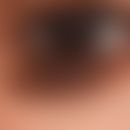Synonym(s)
AEC Syndrome; Ankyloblepharon Ectodermal Dysplasia Clefting Syndrome
HistoryThis section has been translated automatically.
Hay & Wells, 1976
DefinitionThis section has been translated automatically.
Rare form of ectodermal dysplasia, which was delimited in 1976 as a specific, autosomal dominant syndrome from the large group of ectodermal dysplasias (which comprises > 150 different syndromes).
You might also be interested in
Occurrence/EpidemiologyThis section has been translated automatically.
So far, less than 50 cases in 20 families have been reported.
EtiopathogenesisThis section has been translated automatically.
- Autosomal-dominantly inherited mutations of the p63 gene mapped on the genloci 7q11-q21.3, 7q11 and 19q. S.a. ADULT syndrome and EEC syndrome.
- Mutations of the SAM region of the TP73L gene (p63 gene; chromosome 3q27) have also been detected which lead to abnormal splicing of the keratinocyte growth factor, inhibition of specific protein-protein interactions or repression of transcription of other growth-related genes. The mutation is found in a number of other ectodermal dysplasia syndromes (e.g. EEC syndrome). To date, 5 distinct human malformation syndromes have been described in which mutations have been found in the p63 gene. Here, a far-reaching correlation in the genotype-phenotype can be recognized.
ClinicThis section has been translated automatically.
- Diffuse erosive inflammation of the scalp caused by extensive epithelial defects with consecutive scarred alopecia. The skin is reddish at birth, shows coarse lamellar scaling and mostly palmo-plantar keratoses.
- Furthermore, ankyloblepharon, oligodontia, onychodystrophy (also anonychia), hypohidrosis with abnormal regulation of the heat balance (hyperpyretic epidsodes), clefts in the lip and/or palate, hyperthelia, syndactyly may occur.
- The hair on the head of the affected person is sparse, sometimes wiry, with irregular hair shaft anomalies and hair hypopigmentation. Eyelashes are sparse or missing completely.
- Nails may be missing or malformed. Sweat glands may be affected similarly to those of the anhidrotic ectodermal dysplasia (Christ-Siemens-Tourraine syndrome). The teeth are often small, conically shaped, possibly reduced in number, and there is a susceptibility to caries due to the lack of saliva secretion.
TherapyThis section has been translated automatically.
Symptomatic dermatological therapy; surgical intervention for ankyloblepharon and cleft lip and palate.
LiteratureThis section has been translated automatically.
- Bartels NG et al (2007) Hay-Wells syndrome in a child with a mutation on the gene TP73L. JDDG 10: 919-923
- Hay JR, Wells RS (1976) The syndrome of ancyloblepharon, ectodermal defects and cleft lip and palate: autosomal dominant condition. Br J Dermatol 94: 277-289
Outgoing links (7)
Adult syndrome; Anhidrotic ectodermal dysplasia; Anonychia (overview); Ectodermal dysplasia ; Eec syndrome; Nipple accessory; Onychodystrophy (overview);Disclaimer
Please ask your physician for a reliable diagnosis. This website is only meant as a reference.




